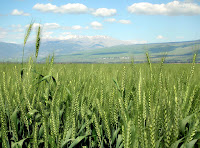 I shouldn't have been so surprised to learn that the same trends I've seen in plant ag research are going on over in the veterinary buildings.
I shouldn't have been so surprised to learn that the same trends I've seen in plant ag research are going on over in the veterinary buildings.I hear that the famous vet schools are all replacing their large animal vets with medical mouse scientists as rapidly as they can get the old dudes to retire. We still have a big chicken research center here in Upstate NY, thanks to the influence of the professor who invented the nugget, but apparently the only other remaining U.S. poultry programs are in Arkansas and Delaware. I guess all the ag schools are fighting to climb aboard the NIH's cancer train. And I suppose no sensible student is willing to spend one or two hundred thousand dollars to learn how to birth calves in the middle of the night...








